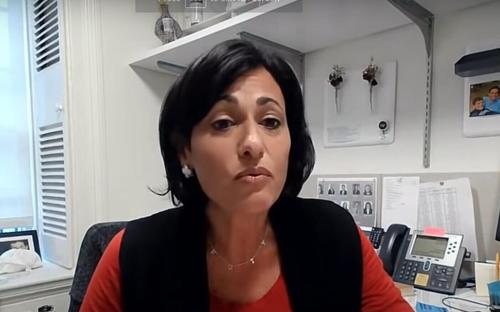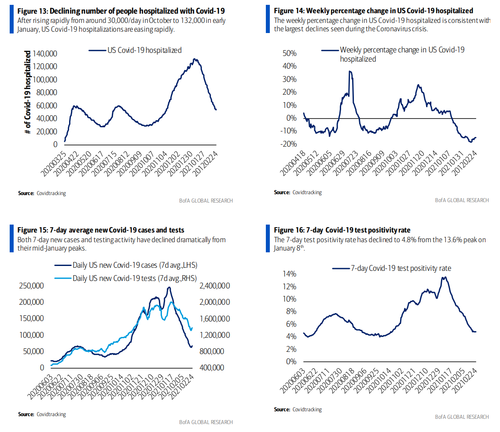On Friday, Biden's new CDC Director, Rochelle Walensky, issued a 'sobering warning' over new COVID-19 variants - in particular the B.1.1.7 strain first found int he UK, and which now accounts for an estimated 10% of current US cases. Additionally, variants in California and New York also appear to spread more easily, according to Bloomberg.

"Things are tenuous -- now is not the time to relax restrictions," said Walensky, adding "The latest data suggest that these declines may be stalling, potentially leveling off at still a very high number. We at the CDC consider this a very concerning shift in the trajectory."
Walensky's warning was simultaneously parroted by Anthony Fauci - head of the National Institute of Allergy and Infectious Diseases - saying that people shouldn't become complacent, and that we may be wearing masks into 2022.
"We really have to be careful and take a look at that curve," he said, adding "If we plateau at 70,000, we are at that very precarious position that we were right before the fall surge, where anything that could perturb that could give us another surge."
"We may be done with the virus but clearly the virus is not done with us."
The renewed 'concern' comes as both COVID cases and deaths are falling precipitously.
According to BofA, "The seven-day average of new cases in the US is down up 5% from the prior week to 68,000," which they attribute in part to the impact of last week's winter storms driving down testing - but noting that "the true trend in infections is still likely modestly lower."
And now for the chaser; The CDC just admitted in its own report that asymptomatic and pre-symptomatic transmission within households - a key justification for lockdowns - turns out to be virtually nonexistent. Household transmission is the primary mode of infection for COVID-19.
As The Federalist's Georgi Boorman writes:
The Jan. 29 report’s conclusion seems to fit the pro-mask narrative, of course: “Schools might be able to safely open with appropriate mitigation efforts [such as masking and not allowing student cohorts to mix] in place.” In the 17 rural Wisconsin schools surveyed, only seven cases were linked to in-school transmission out of 4,876 pupils, and no staff members were infected at school during the study period.
While the report spends ample time explaining the mitigation strategies employed in the schools and the high reported mask compliance (92%) among students, the authors later discuss something you probably have not seen in any of the mainstream media’s coverage of this report:
“Children might be more likely to be asymptomatic carriers of COVID-19 than are adults…This apparent lack of transmission [in schools] is consistent with recent research (5), which found an asymptomatic attack rate of only 0.7% within households and a lower rate of transmission from children than from adults. However, this study was unable to rule out asymptomatic transmission within the school setting because surveillance testing was not conducted” (emphasis added).
The study, a meta-analysis of 54 studies into household transmission of COVID-19, was posted as a pre-print over the summer and published in December.
The most significant portion of the analysis finds that while asymptomatic and presymptomatic cases account for just 0.7% of transmission, symptomatic cases had an 18% attack rate within the household. In other words, most people who contract COVID-19 at home were infected by someone who was visibly ill.
"Estimated mean household secondary attack rate from symptomatic index cases (18.0%; 95% CI, 14.2%-22.1%) was significantly higher than from asymptomatic or presymptomatic index cases (0.7%; 95% CI, 0%-4.9%; P < .001), although there were few studies in the latter group. These findings are consistent with other household studies28,70 reporting asymptomatic index cases as having limited role in household transmission," reads the study.
As Boorman continues: "The key, if not central, rationale for non-pharmaceutical interventions such as masking, distancing, and staying at home is allegedly significant transmission from people who don’t show symptoms. If the contagiousness of people without symptoms is not what drives the spread of SARS-COV-2, then no COVID restriction on public life besides staying home when you are clearly sick could be justified, considering the obvious negative consequences of these restrictions."
Read the rest of the report here.

No comments:
Post a Comment
Note: Only a member of this blog may post a comment.